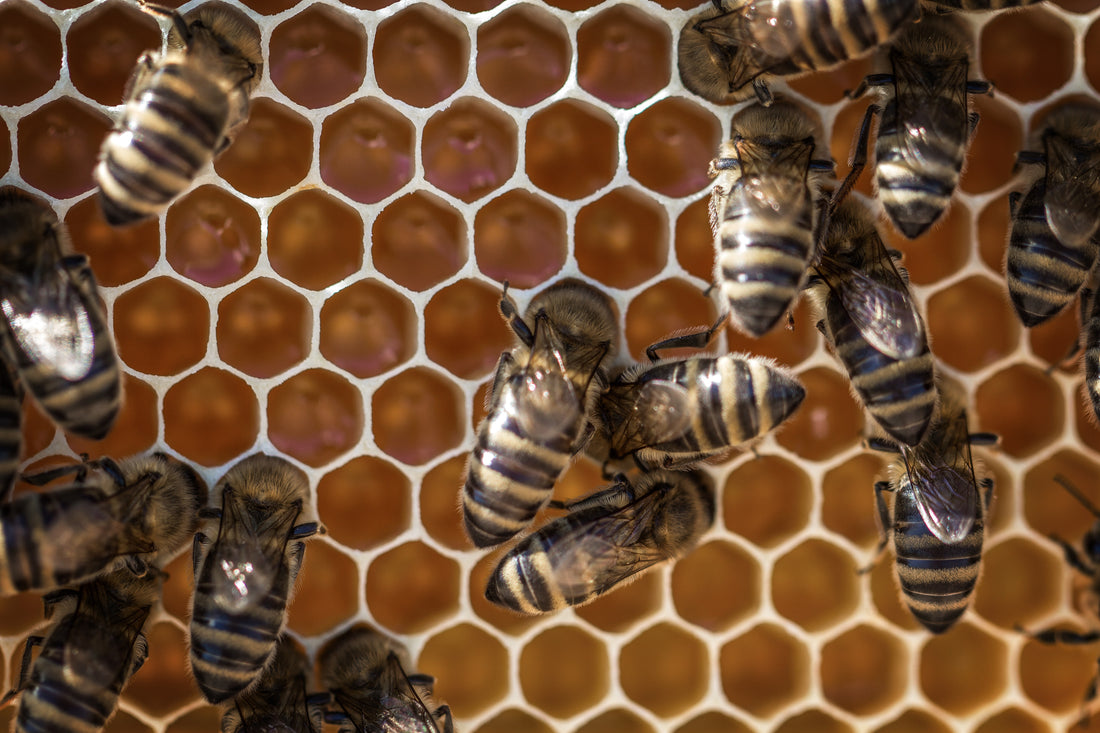Hawaiian Honey Bees and what they make!
Honey bees are truly amazing creatures. Of course, they produce honey, as their name suggests, but, they also provide us beekeepers with many other beneficial products. It’s astounding how much work those little bees can do!
Honey
Raw Honey contains all the elements necessary to sustain life including water, minerals, vitamins and enzymes. A human could (in theory!) live two months on nothing but honey. Archaeologists have discovered jars of honey inside ancient Egyptian tombs which were still edible after thousands of years.
Bees make honey from nectar. When they forage for food she collects nectar from hundreds of flowers and stores it in her honey stomach. Once she returns to the hive she shares the nectar with the rest of the bees by regurgitating it from her stomach. The bee adds an enzyme to the nectar during this process. Then, the worker store the nectar in wax cells. At this stage the nectar is still in liquid form. Then they beat their wings rapidly to create air currents inside the hive which helps to evaporate and thicken the nectar. The bees cap the thickened honey with a thin layer of beeswax.
This is capped honey
Honey can vary in color and in flavor based on what kind of flower the nectar came from.
A single worker bee will collect less than a teaspoon of honey in her life. But working together they can produce enough honey for themselves and for human consumption.
Wax and Honey Comb
A bee produces beeswax in a gland found on her abdomen. These wax producing glands develop on older worker bees who are typically between 12 and 30 days old. To activate the glands the bees cluster together to create heat. The glands convert sugar found in honey into wax. The wax comes out in tiny flakes through the bee’s pores. Then, they will chew the tiny flakes to make them malleable or pliable. The wax is used to create comb where food and brood are kept.
Beeswax can be used to make candles, lip balms and skin creams. It can also be used as a sealant for cloth and woodworking.
Bees make honey comb from beeswax. The comb can be cut directly from the hive with honey still inside and the whole product can be eaten. This is sometimes called raw honey because there is no processing, filtration or manipulation of this comb honey.
It takes ten pounds of honey to produce one pound of beeswax.
Propolis
Propolis is also called bee glue. Propolis is made by mixing beeswax with resins from bark and leaves. It is a sticky substance which the bees use to seal unwanted spaces in the hive. This can help protect bees from pests because they can narrow the entrance to the hive so it is easier to defend. Propolis can also help to keep out pathogens which cause diseases in bees.
Because propolis has antifungal properties the bees can use it to stop the walls of their hive from rotting.
A beekeeper can chip propolis off of frames or walls of a beehive. Propolis has antibacterial and antioxidant properties. Tinctures and creams can be made from it to help ease sore throats or heal wounds.
Bee Pollen
Bee Pollen is a protein rich food which bees gather from flowers. A forager will collect pollen and store it in pollen baskets located on her hind legs. When the baskets are full it will look like the bee has a colorful ball on her leg.
A bee with a full pollen basket
Some worker bees will eat pollen but it is primarily fed to larvae. Bees will pack pollen into cells with their heads for storage.
The color of the Bee Pollen varies depending on what kind of flower the bee collected the pollen from. It can range from almost pure white to bright yellows and golden oranges to deep dark red.
Pollen comes in so many different colors!
We as beekeepers can collect Bee Pollen using a pollen trap where the bee walks through a wire mesh on its way back into the hive which knocks the pollen off their legs and into a compartment below.
Recent research indicates taking Bee Pollen may boost the immune system and act as an anti inflammatory.
Maybe we shouldn’t limit bees by calling them honey bees! Thanks for reading about some of the useful things bees collect and produce.

